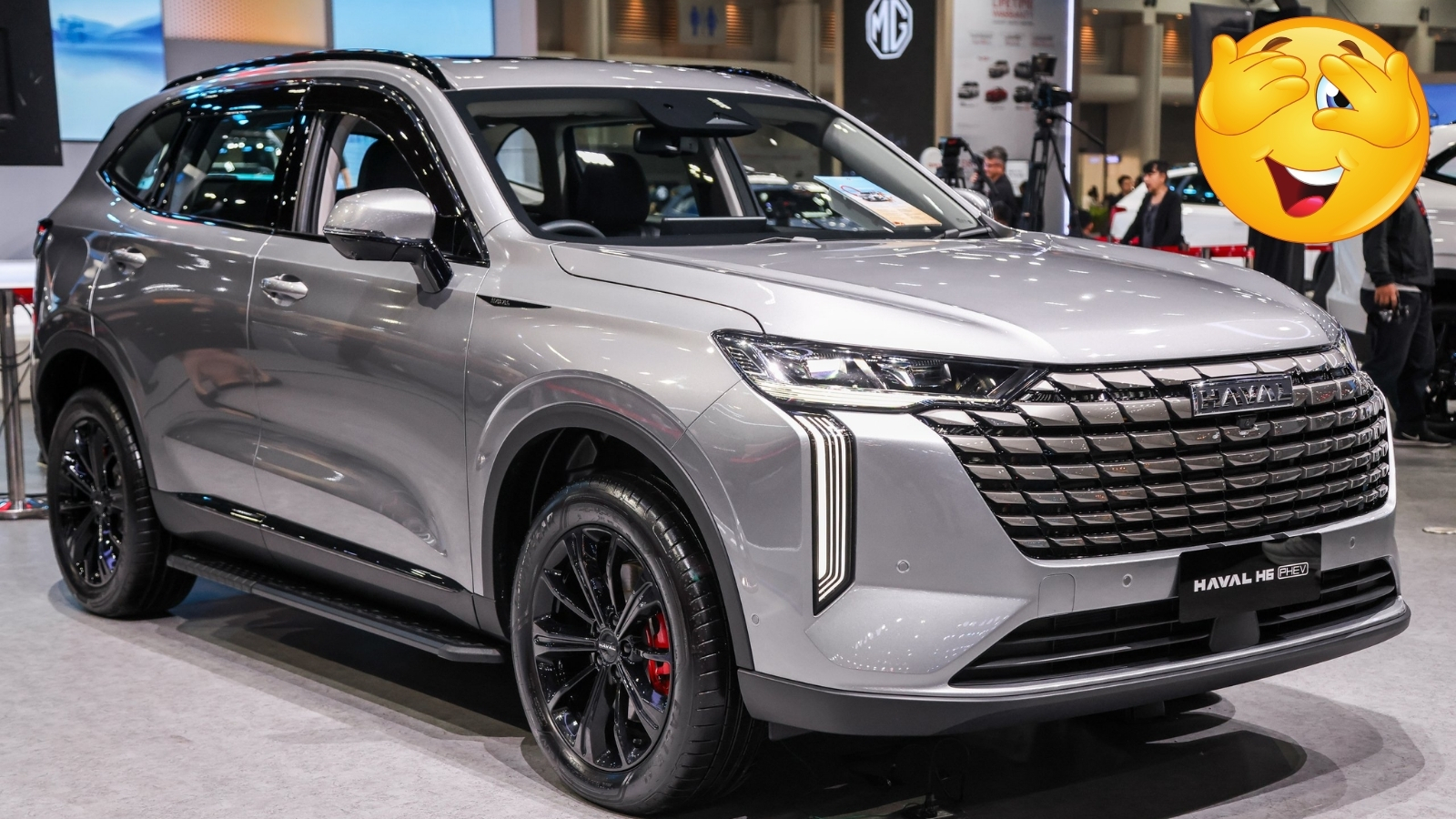The GWM Haval H6 just got its biggest update since arriving in Australia four years ago. If you’ve been watching this mid-size SUV as a potential family hauler, there’s quite a bit to unpack with this 2025 refresh.
What’s Actually New This Year
GWM didn’t just slap on some new badges and call it a day. The styling overhaul is immediately noticeable with that cascading dark grille up front – it’s got a premium look that rivals more expensive competitors. Those plunging LED daytime running lights give it a modern edge, while the back end gets a complete redesign with separate tail lights instead of the old light bar.
The biggest mechanical change? You can’t get all-wheel drive with the petrol engine anymore. That might disappoint some buyers, but GWM has compensated by bumping the petrol engine’s power significantly – up 20kW to 170kW and a hefty 60Nm torque increase to 380Nm.
![2024 Haval H6 HEV - Interior and Exterior Walkaround [4K]](https://i.ytimg.com/vi/wAC15UwhCXo/hq720.jpg?sqp=-oaymwEhCK4FEIIDSFryq4qpAxMIARUAAAAAGAElAADIQj0AgKJD&rs=AOn4CLBUbNTquKFO2W1t_bhbheKPMdYgrg)
PHEV Variants Join the Family
Here’s where things get interesting. The new plug-in hybrid variants offer genuinely impressive electric-only range – up to 106km for the front-drive version. That’s enough for most people’s daily commute without burning a drop of fuel.
The all-wheel drive PHEV version packs serious punch too, with a claimed 0-100km/h time of just 4.8 seconds. That’s sports car territory from a family SUV.
Pricing That Makes Sense
| Variant | Drive-Away Price |
|---|---|
| Lux 2.0T FWD | $35,990 |
| Ultra 2.0T FWD | $38,990 |
| Lux Hybrid FWD | $40,990 |
| Ultra Hybrid FWD | $43,990 |
| Ultra PHEV FWD | $47,990 |
| Ultra PHEV AWD | $50,990 |
Yes, the entry price has gone up $2,000 because GWM dropped the cheapest Premium grade. But look at what you’re getting for that money – the base Lux still comes with plenty of gear that you’d pay extra for elsewhere.
The sweet spot might be the regular hybrid at $40,990. You get the fuel efficiency benefits without the complexity of plug-in charging, and it’s only $5,000 more than the base petrol version.
Value Proposition
When you compare these prices to similar-sized SUVs from established brands, the Haval H6 still represents solid value. The seven-year unlimited kilometer warranty adds peace of mind that many competitors can’t match.
Engine Options Explained Simply
Petrol Engine: The updated 2.0-liter turbo now produces 170kW and 380Nm, paired with a nine-speed automatic. It’s smooth and has enough grunt for most situations, returning 7.4L/100km in testing.
Hybrid System: Uses a 1.5-liter engine with electric assistance for 179kW total system power. Fuel consumption drops to 5.2L/100km – a meaningful difference for daily drivers.
Plug-in Hybrid: The star of the show, offering 240kW in front-drive form or 268kW with all-wheel drive. The 19.09kWh battery provides over 100km of electric range, and you can fast-charge it in 28 minutes from 30-80%.
Which Powertrain Suits You?
If you do mostly city driving and can charge at home, the PHEV makes financial sense despite the higher upfront cost. Highway cruisers might prefer the simplicity of the regular hybrid. The petrol engine works well if you’re budget-conscious and don’t mind slightly higher fuel costs.
Interior and Technology Improvements
The cabin feels more upmarket now. That massive 14.6-inch touchscreen dominates the dashboard and includes wireless Apple CarPlay and Android Auto. Moving the gear selector to the steering column frees up center console space.
The new cream interior option (available on Ultra models) brightens the cabin considerably compared to the all-black setup. It’s a small touch that makes the space feel more premium.
Practical Considerations
Cargo space remains generous at 560 liters with rear seats up, expanding to around 1,400+ liters with them folded. The power tailgate (standard on all but base Lux) makes loading easier.
Rear seat space is adequate for adults on shorter trips, though taller passengers might feel cramped on longer journeys. The driving position is comfortable with good visibility.
Should You Consider the 2025 Haval H6?
This updated model addresses several weaknesses of the previous version while maintaining its core value proposition. The styling is more sophisticated, the technology more current, and the powertrain options more diverse.
The PHEV variants are particularly compelling if you can use the electric range regularly. Even the base petrol version offers solid equipment levels for the money.
However, consider that GWM is still building brand recognition in Australia. Resale values might not match established brands, though the comprehensive warranty helps offset this concern.
The 2025 Haval H6 represents genuine progress. It’s not trying to be a luxury SUV, but it delivers practical family transport with modern features at competitive prices. The PHEV variants could be game-changers for buyers wanting to reduce fuel costs without range anxiety.
Frequently Asked Questions
Q: How long is the warranty on the 2025 Haval H6?
A: Seven years unlimited kilometers for the vehicle, eight years unlimited for the battery.
Q: Can you charge the PHEV using a regular household outlet?
A: Yes, though GWM hasn’t specified charging times for standard outlets yet.
Q: Is the 5-star ANCAP rating confirmed for 2025 models?
A: GWM hasn’t confirmed if the previous rating carries over to the updated models yet.
2025 Aston Martin Valhalla Plug-in Supercar Set for Australia
